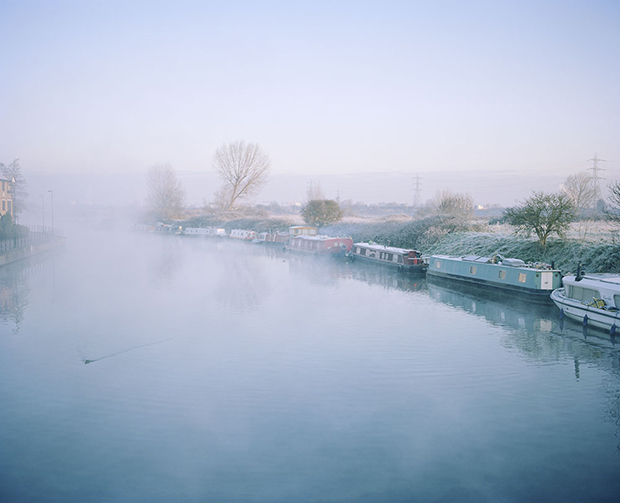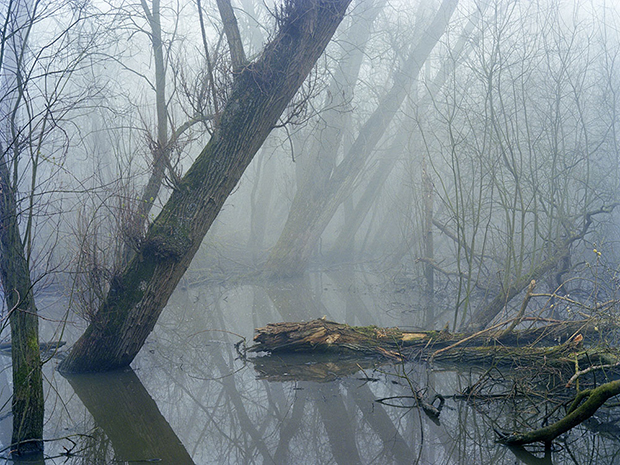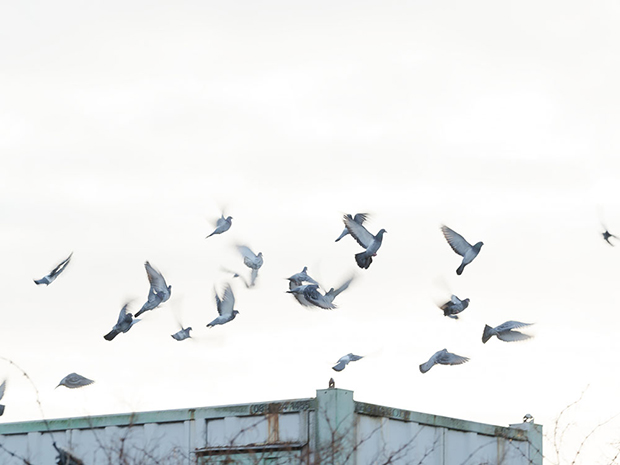
In her astute and poetic introduction to photographer Freya Najade’s latest book, writer Esther Kinsky explains how East London’s “canals and the River Lea form a layered landscape of urban histories, of comings and goings, of the shifting interferences of land and water and nature and man”.
She’s describing a complex network of collision and change, and she touches on how a landscape, in the eye of its many beholders, is distinct and subjective.
“But not everyone feels the need to decipher it,” she writes.
Najade is one of the few, and her stunning collection Along the Hackney Canal is testament to her patience, her refined eye for the sublime and her apparent urge to explore the diversity of experience and place.
For a project focused on what might seem like a relatively narrow, objective topic, the images – always effective – are remarkably disparate and personal. It’s this variety and versatility that really elevates the work.
The collection begins with a moody, Dickensian scene of bare deciduous trees, placid water and thick mist. Slim branches intertwine and protrude at gothic angles. You can easily imagine Abel Magwitch, of Great Expectations, emerging from the deep; it’s a great start.

Amongst the photos that immediately follow is a series of more abstract shots of the water, with close-ups of its contents, which include a ducking swan, dreamlike reflections of puffy clouds and a plastic Iceland bag suspended in the flow.

There’s a painterly quality to some of these compositions, with colour and texture taking on an almost impressionistic dimension. One shot, of a mass of non-descript green matter in water, could easily be compared, in part, to a Turner – or even a Monet.

Flicking further, we encounter perfect arrangements of yellow-flowering bushes in full bloom, a cormorant arching its wings against a tangle of brown thicket, and a CCTV camera shooting vertically from foliage, recalling the gas lanterns of a stereotypically Victorian topography, but with a more sinister, voyeuristic edge.


Litter, or waste, runs throughout – an abandoned trolley, a derelict moped and a cardboard packet floating amidst a swirl of iridescent specks are juxtaposed by, for example, the flesh of red berries and a twist of brambles covered in frost.

A few images in particular are simply spectacular, and whoever at Hoxton Mini Press edited the project did a sterling job selecting which to draw specific attention to.
Roughly half of the photos are afforded a double page, some of which are extremely special: there’s a row of pastel-coloured houseboats lining the foggy banks of what looks like the Lea Navigation; there’s a gathering of Orthodox Jewish people running races on marshland; and there’s a snap of long golden grass, dry and swaying in an almost Southern-gothic manner.

You can imagine these three dramatic prints hanging in grand frames on the walls of our swankiest galleries.
Kinsky, in her intro, also writes about how “Freya’s gaze is not directed into the distance but into the depth of her field of vision, searching for the underlying layers of older landscapes spelt into the land”.
There is something in this that rang especially true for me when considering an image towards the end of the collection.
At the front of the shot is the canal, behind it a relic of old heavy industry and scattered further back are the traces of London’s relentless development; it’s a scene worth studying.
It would be a huge pleasure to work through Along the Hackney Canal in tandem with author Helen Babbs’s brilliant recent release, Adrift: A Secret Life of London’s Waterways.
Along the Hackney Canal is published by Hoxton Mini Press.
ISBN: 9781910566114. RRP: £14.95


